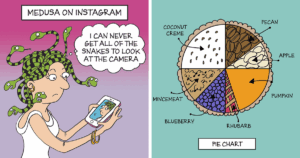“After 50 Years of Hunting, Loch Ness Monster Expert Uncovers Shocking Truth Behind ‘Nessie’s’ Identity!”
After half a century of chasing shadows, sonar beams, and all things mysterious in Scotland’s iconic Loch Ness, one seasoned expert is throwing in the towel—sort of. Adrian Shine, a naturalist who’s dedicated his life since 1973 to unraveling the myth of Nessie, has come up with a rather disheartening conclusion: the legendary Loch Ness Monster might just be a figment of our collective imagination—or perhaps a glorified swan! Yes, after leading the illustrious ‘Operation Deepscan’ in 1987 with state-of-the-art equipment costing over £1 million—only to turn up empty-handed—he now believes that what people have spotted all these years are more likely swans and boat wakes, not a prehistoric beast lurking beneath the surface. How do you reconcile the childhood dreams of huge monsters with the reality of a graceful bird paddling around? Dive into Shine’s fascinating yet slightly disappointing discoveries about what really swims beneath those dark waters. LEARN MORE
After spending five decades trying to hunt down the Loch Ness Monster, this expert reckons he has finally got to the bottom of what it really is.
Adrian Shine – who has been studying the elusive mythical creature that supposedly stalks in the Scottish Highlands since 1973 – has some bad news for fellow enthusiasts.
The naturalist led a major sonar exploration in Loch Ness dubbed ‘Operation Deepscan’ back in 1987, but even with £1 million worth of equipment, he was unable to find anything concrete.
He’s published several scientific papers on the phenomenon as well as a few books, so he certainly knows his stuff when it comes to Nessie.
But according to Shine, the legendary monster doesn’t actually exist – and people who claim to have seen it were actually getting confused with another long-necked creature.
And seen as though he has dedicated the majority of his life to tracking the Loch Ness Monster down, his latest hypothesis has come as quite a disappointment to him too.

Adrian Shine reckons he has an explanation for supposed sightings of the mythical creature (Keystone/Getty Images)
Shine believes that supposed sightings of mysterious humps, loops in the water or an elongated neck were likely just swans, which are more visible in clear conditions, and boat wakes.
He reckons that vessels were behind alleged disturbances in the water, which many people have assumed the elusive creature was responsible for.
Describing himself as a ‘sympathetic sceptic’ when it comes to the Loch Ness Monster, Shine broke down what he thinks people have really witnessed while visiting Loch Ness.
The founder of the Loch Ness Project said: “Boat wakes are probably the number one cause of monsters sightings, and waterbirds are the long-necked ones.
“Of course, there are long-necked creatures on Loch Ness – we call them swans.
“And in calm conditions you can lose your ability to judge distance, and if you can’t judge distance, you can’t judge size.”

The Loch Ness Monster hunter thinks people are likely just seeing swans and boat wakes (Getty Stock Image)
According to Shine, waterbirds such as cormorants and mergansers could also be confused with the monster that supposedly lives in the freshwater loch.
Expanding on his theory about boat wakes being misinterpreted as Nessie’s ‘humps’ poking out of the water, the expert said they can create a ‘fascinating illusion’.
Shine went on: “When a vessel is coming towards you, it is obvious what the wake is – you see it spreading out from the sides of the vessel approaching you, or indeed going away from you.
“But if it’s going across your front, it’s quite different – you see the individual wave train, the individual wavelengths, as solid black humps.
“They will be short and many for a vessel moving slowly, and they will be longer and fewer as the vessel gathers speed.
“The wave lines can be almost continuous, and it is a fascinating illusion. It is very compelling.”
However compelling it may be to witness, it isn’t enough to convince Shine that Nessie is no more than a ‘nautical lore reborn in Loch Ness’ which stems from the mythical sea serpents.

The Loch Ness Monster expert believes people’s eyes have been playing tricks on them (PEN News)
The author, who has just published a book titled A Natural History of Sea Serpents, said: “The way that it is perceived… the two forms – the multi-humper and the long necker – are exactly where the 19th century debate got to with sea serpents. We know what sea serpents look like, you do, I do, everybody else does – and the things people see now in Loch Ness will confirm that.
“People will continue to come forward having seen things unrecognised by them, and which will inevitably confirm the stereotypes that society has – it is called confirmation bias.”
According to Shine, even if there was some sort of mythical monster living in the loch, it wouldn’t have enough food to sustain itself anyway.
Referring to the 10 percent rule, which stipulates that only a tenth of the energy in any level of the food chain will be passed to the next, the Nessie expert continued: “We’ve measured the population of open-water fish acoustically, and we reckon it’s about 20 tonnes.
“And so if you’ve got 20 metric tonnes of fish, then you could only have two tons of monster. That’d be about half the weight of a basking shark.
“You see the orders of magnitude that we’ve got to, and they’re very low.”













